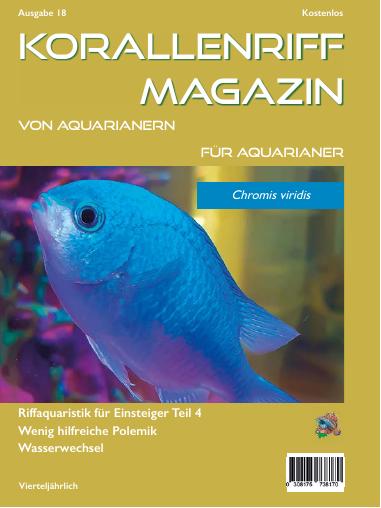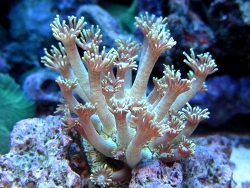Info
Marguerite corals, such as Alveopora and Goniopora, have enjoyed great popularity in aquarium care for many years. The main difference between the two species: Alveopora polyps have 12 tentacles, whereas Goniopora polyps have 24 tentacles. Some of them keep well and are often easy to propagate.
Certainly not all species can be lumped together in the same way, and some are still considered difficult today. Nevertheless, with the many additives we have today and the appropriate feeding, it is easier than it used to be. We know that many of them get part of their nutrition from light, but the species that are really fit and growing are those that can also filter usable material from the water. We have experience that the species to which dusty food (planktonic food) grow better and also stand up better.
Goniopora and Alveopora should be given a moving but never direct current, otherwise they will no longer grow.They require medium light intensity and can therefore be established between the middle and near the bottom. They are not quite as sensitive to the water quality, but nevertheless you should also offer them low No3 and Po4 concentrations in the water. Experience has shown that they do better with trace element supplements and more frequent salt changes. This also indicates that they can absorb many other things from the water as well as food.
Despite good reference books, it is not easy to identify the species. In order to be able to do this 100%, a skeleton would have to be available. This is why we also have to classify species as sp. again and again.
Goniopora pulvinula Wells, 1954 · unaccepted > junior subjective synonym







 Christian_B.
Christian_B.




































